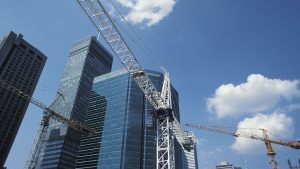As the construction industry awaits finalization of energy efficiency amendments within the 2020 National Building Code (NBC), Daily Commercial News contributing columnist John Bleasby spoke to Aubrey LeBlanc, CEO of the Ontario Building Officials Association (OBOA), about the impact his members anticipate.
One focus of the 2020 NBC is increased energy efficiency requirements. Do you agree that these represent perhaps the most significant amendments in decades?
Yes, but I think it’s been coming for quite a while, a slow burn. But that’s more a matter of public policy. At the same time, Ontario has been on the path towards energy efficiency for some time. We’re currently about 30 per cent ahead of the National Building Code today.

Given the scope of energy efficiency changes expected, what do you foresee as the biggest challenges facing building officials?
The biggest problem is that energy efficiency is invisible, and by that I mean it’s not as obvious as other physical characteristics of materials or construction. It’s about air movement and temperature loss. As a result, it becomes a product of the whole system, not just componentry.
Of course, componentry has evolved rapidly over the past few years in parallel with performance expectations. How do building officials view these developments
Componentry matters. Componentry is evolving — windows and cladding and their installation; the moisture barriers installed to reduce the leakage; and the caulking and tapes that are used. These are all used in the name of keeping air either in or out, depending on the season, so the building can operate as a system with known and expected performance levels. It even goes back to the design of the building. However, in the construction process there are so many ways to wreck that system. The main challenge is the successful integration of all of those pieces.
Building inspectors and officials can rely on architectural stamps and signed engineering drawings to confirm many structural aspects of a project. However, since it’s not certain blower tests will be mandatory in the new code, how will inspectors objectively and effectively confirm overall energy performance?
The blower door test is aimed at a particular portion of the market that is way up the food chain. There’s a lot more forgiveness in normal construction. When it comes to energy efficiency, everything has to move more seamlessly. Every small problem early on can magnify later. For example, the sequencing of trades is important. You want to inspect each stage at the proper time and understand that it is not going to be changed later.
However, at the end of the day, responsibility for final approval lands on the desk of building officials, right?
Yes, but if the project doesn’t need a blower door test, it will be a matter of approving construction practice. That places the onus much more on every one of the players to be better at making better decisions, particularly with things that are not traditional. There have always been optional ways to do a lot of things due to cost containment issues with any construction work. That’s why so many different paths exist within the code. It puts the onus back on everyone when a new design comes in, using new materials, new approaches and people who are not familiar with them.
As the association representing Ontario building officials, how does the OBOA feel about the policy path being undertaken by the 2020 NBC committees?
It’s a matter of choices. I think what the committees are probably wrestling with today is whether to be extreme, which impacts all projects, versus taking a small step back by permitting mild variations across the whole spectrum. As long as the code is moving the train in the right general direction, it is acceptable. Codes tend to land in a “very good space” rather than a space of “excellence.”
*This interview was edited and condensed











Recent Comments
comments for this post are closed